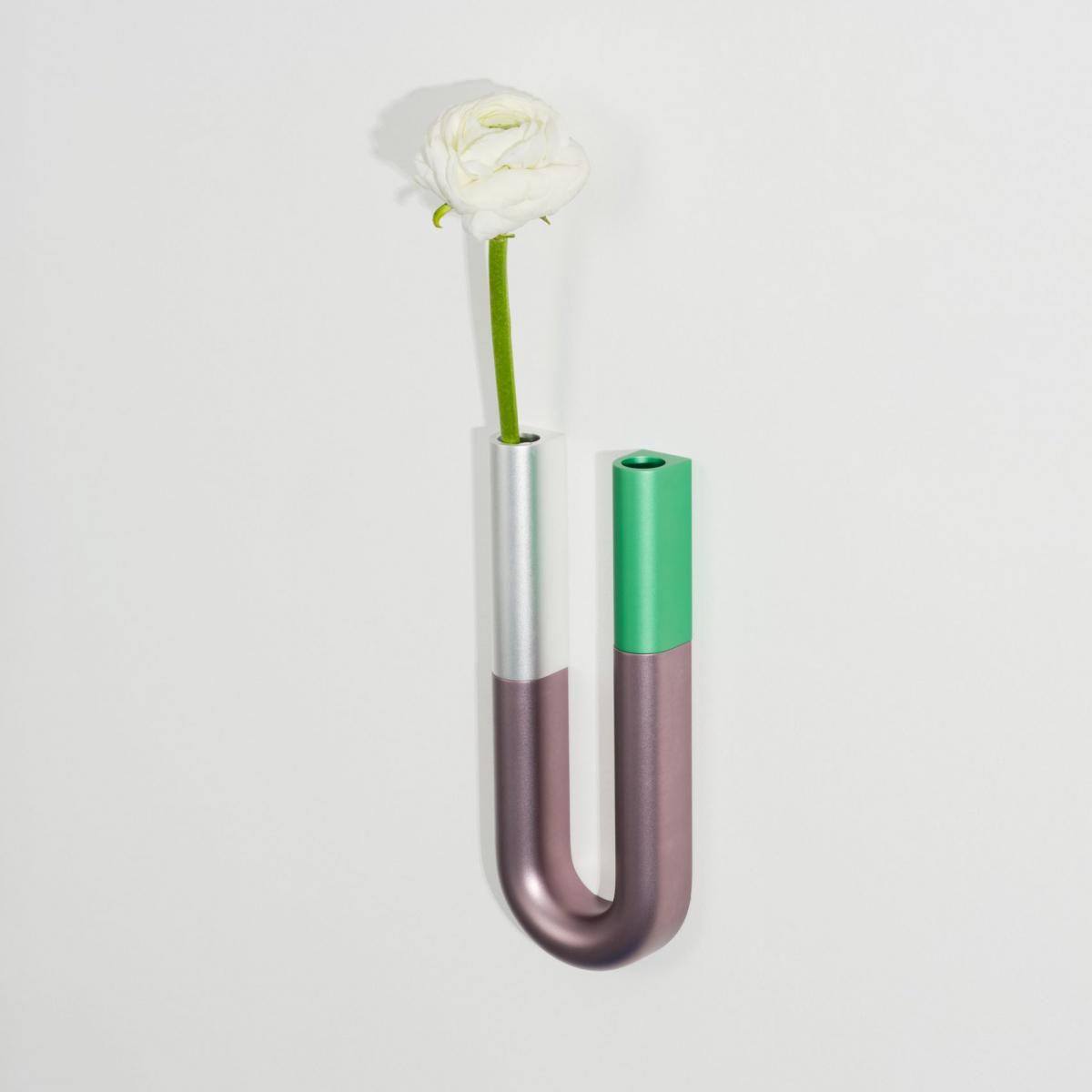Blog post
Business
Aluminium shone brightly at Toronto’s 10th design festival this year, where a gallery show called “Aluminum Group” featured a collection of unique objects by 15 emerging and established designers from across Canada. The Toronto-based industrial designer Jamie Wolfond teamed up with MSDS Studio to organize and curate the show. The brief they gave the designers was simple: make something beautiful from machined aluminium.
Mass production of aluminium generally implies castings or aluminium sheets. In this case, each object came in small editions of one or two. This meant the designers could computer-model their creations in three dimensions, then work subtractively, cutting solid aluminium blocks with a CNC router. Each piece had the sheen and durability of an anodized finish, often with eye-pleasing color.
Either practical or conceptual
Some of the designs were prototypes for functional objects—for example, Rachel Bussin’s ice cube tray. Ten individual black aluminium blocks on a silver base, it elevated the mundane and promised to add pizzazz to any cocktail party. Similarly, MSDS Studio brought elegance to the archetypal folding table by crafting it in machined and anodized aluminium.
Caine Heintzman’s design was like something you might see on Amazon, a simple red clip like a carabiner used for rock climbing or sailing—though this one was machined to perfection, and could be attached to a wall for hanging objects.
Other items were more sculptural and conceptual, such as Chifen Cheng’s “Blob,” a mauve aluminium ring that looked like a French cake mold. Cheng conceived of it as a mini “fortress” whose cavity would protect keys or an iPhone.
Industrial inspiration
A number of designers played off the industrial quality of aluminium. A basic screw inspired Wolfond to make “Phantom Thread,” a minimalist lamp with a disc-like shade that one could screw or unscrew to modulate the light.
Anony Studio, based in Toronto, crafted its “Temp” tableware with heat sinks in mind—passive devices that transfer heat away from electronic or mechanical equipment (and are often made of aluminium alloys). Here, a cup, a bowl, and a vase were propped up with bases whose ridges were like a heat sink’s fins.
Lukas Peet made his salt and pepper mills from stacked, interlocking elements in different colors, to reference engine camshafts. The Vancouver designer drew circular sketches by hand before turning them into CAD models, giving his objects an artisanal look that contrasted with the precision of machine cutting. Each time someone used them to grind salt or pepper, the composition of the mills would change.
And Tom Chung thought about prefabricated pipe gaskets when he created a series of vases in diverse heights and widths called “Gasket Vessels.” These consisted of individual aluminium rings in alternating colors, threaded together to make watertight seals.
Conduits and Compounds
Vases were popular; Montreal resident Zoë Mowat’s graphic, U-shaped “Conduit” wall vase resembled a horseshoe magnet, color blocked in three different shades. Two removeable bud vases capped the ends—they could also be flipped and used on a table as candleholders.
Geof Ramsay lives in New Brunswick and sees the world through a maritime lens. After studying the time-lapse movement of a ship pulling into harbor, he came up with a burgundy red “Compound Bowl.” Two intersecting cylindrical forms created three curved compartments for storing one’s valuables.
Nineteen objects in all displayed the versatility and beauty of aluminium, a material that never ceases to amaze.
Picture at the top - Compound Bowl by ©Geof Ramsay.

Conduit wall vase by ©Zoe Mowat
